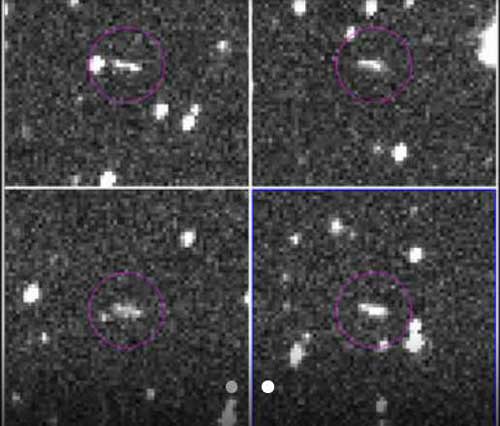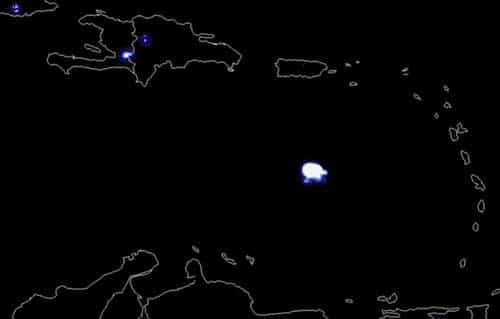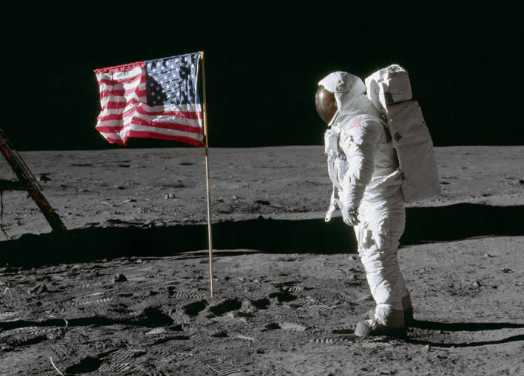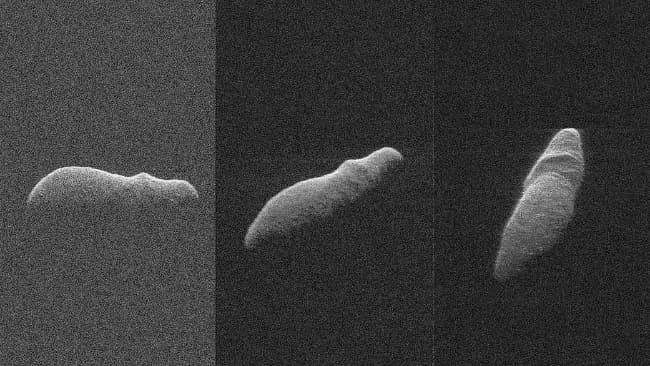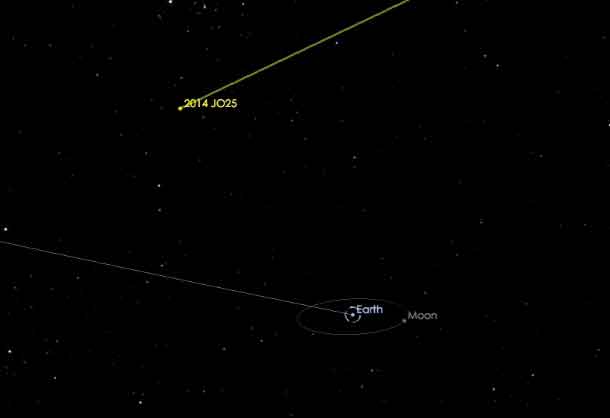Several sources confirm that the first discovered asteroid in 2014, designated 2014 AA, entered Earth's atmosphere late Jan. 1 (Jan. 2 Universal time) over the mid-Atlantic Ocean. The Catalina Sky Survey operating near Tucson, Ariz. discovered this very small asteroid — 6 to 9 feet in size — early on the morning of Jan. 1, and immediately followed up on it. The asteroid entered Earth's atmosphere about 21 hours later, and probably broke up.
The high-precision astrometry data and rapid follow-up observations provided by the Catalina Sky Survey team made it possible for orbit analysts from NASA’s Near-Earth Object Program Office at the Jet Propulsion Laboratory in Pasadena, Calif., to determine possible Earth impact locations. Before that, and based upon the Catalina Sky Survey observations, Steve Chesley of JPL produced a plot of the possible impact locations for asteroid 2014 AA. (Chesley’s graphic is shown in Figure 2, where the blue, nearly horizontal band represents the region of possible impacts).
The geolocation derived by Chesley allowed Peter Brown of the University of Western Ontario, and Petrus Jenniskens of the SETI Institute, Mountain View, Calif., to search the data from low-frequency infrasound observation sites of the Comprehensive Nuclear-Test-Ban Treaty Organization. They found weak signals from stations in Bolivia, Brazil and Bermuda that indicated that the likely impact location was indeed positioned within the predicted area. The location, marked with a red dot, is still somewhat uncertain due to observational factors, including atmospheric effects on the propagation of infrasound signals.
Infrasound stations record ultra-low-frequency sound waves to monitor the location of atmospheric explosions. These sites often pick up airbursts from small asteroid impacts, commonly called fireballs or bolides. There are about a billion near-Earth objects in the size range of 2014 AA, and impacts of comparably sized objects occur several times each year.
Uncertainties present in the infrasound technique and the very limited amount of optical tracking data before impact make it difficult to pinpoint the impact time and location. Even so, Chesley provides the following estimate:
Impact time: Jan. 1, 2014 at 11:02 p.m. EST (Jan. 2 4:02 UTC) Impact location coordinates: 11.7 degrees north latitude, 319.7 degrees latitude.
This information is preliminary and has uncertainties of perhaps a few hundred kilometers, or miles, in location, and tens of minutes in time.
Prior to impact, the orbit of 2014 AA had a very low inclination (about 1 degree) with respect to the ecliptic plane and an orbit that ranged from 0.9 to 1.3 astronomical units from the sun, with an orbital period of about 1.2 years.

This animated GIF shows Asteroid 2014 AA, discovered by the NASA-sponsored Catalina Sky Survey on Jan. 1, 2014, as it moved across the sky. Image credit: CSS/LPL/UA
Source: NASA Jet Propulsion Laboratory

